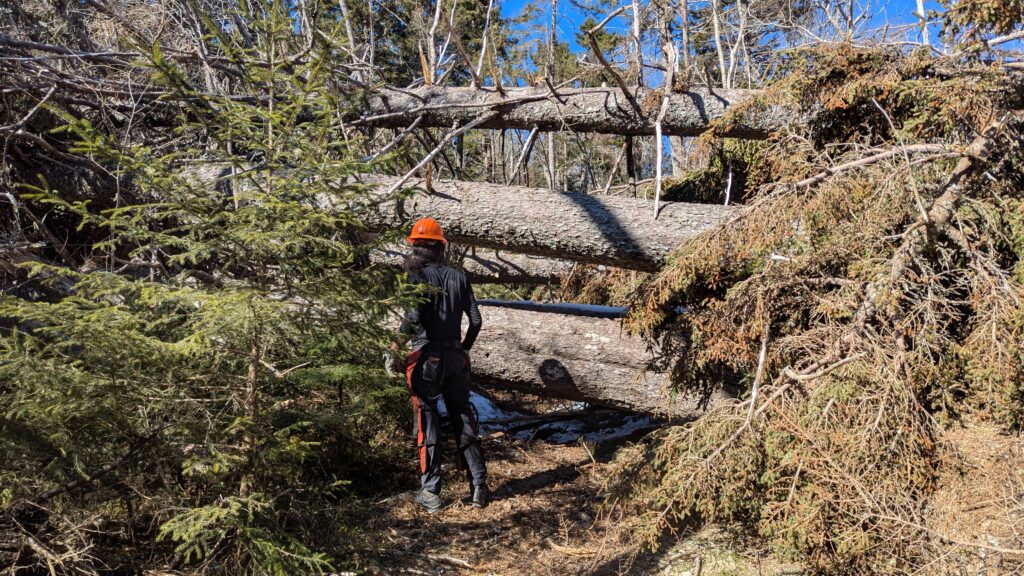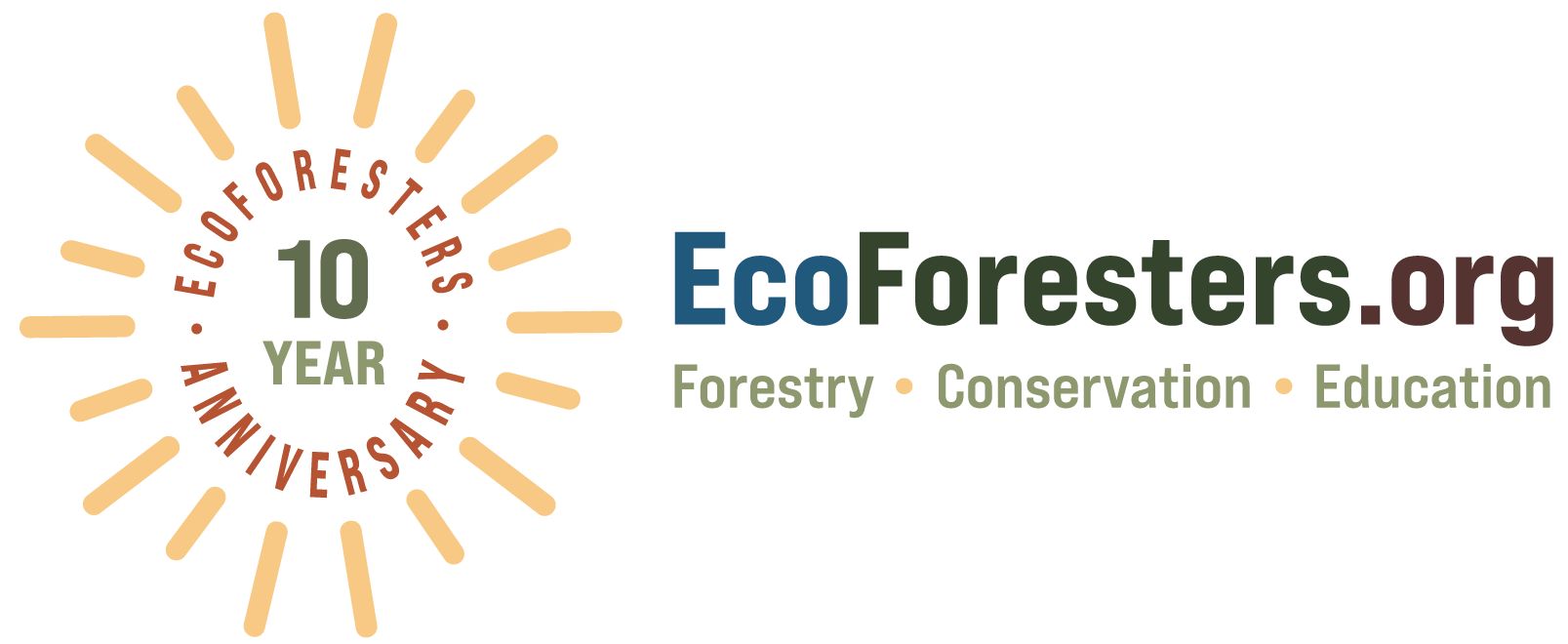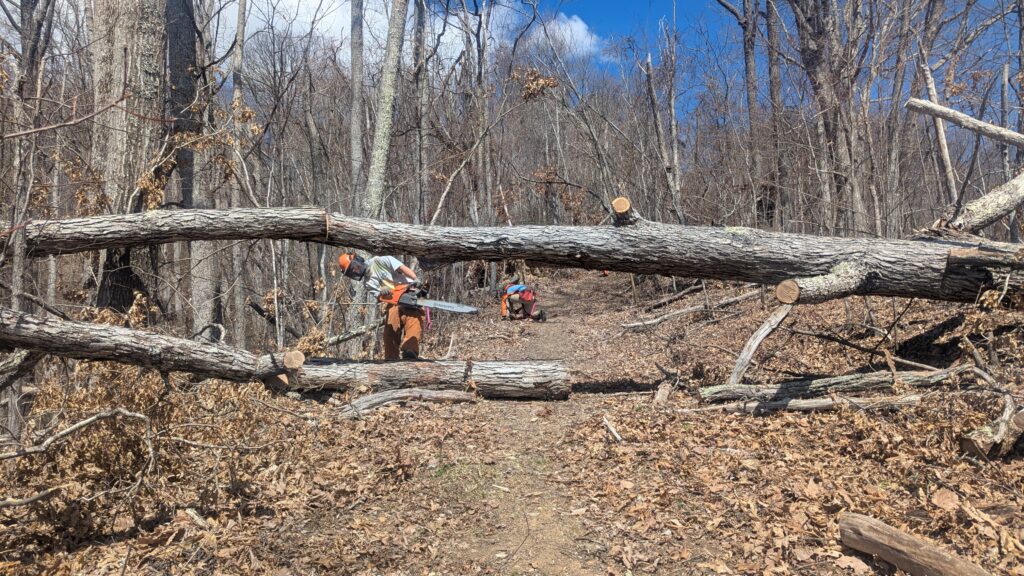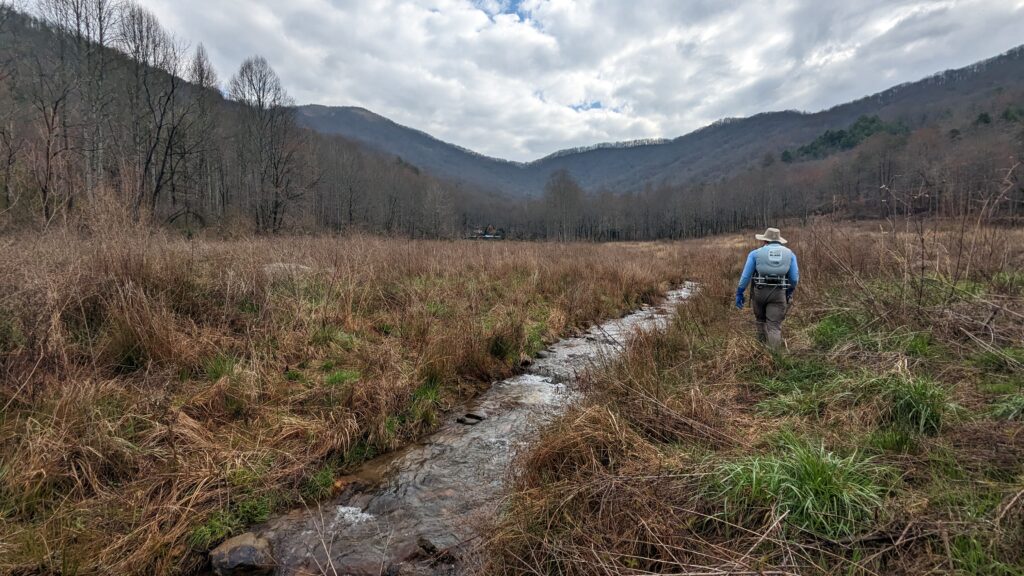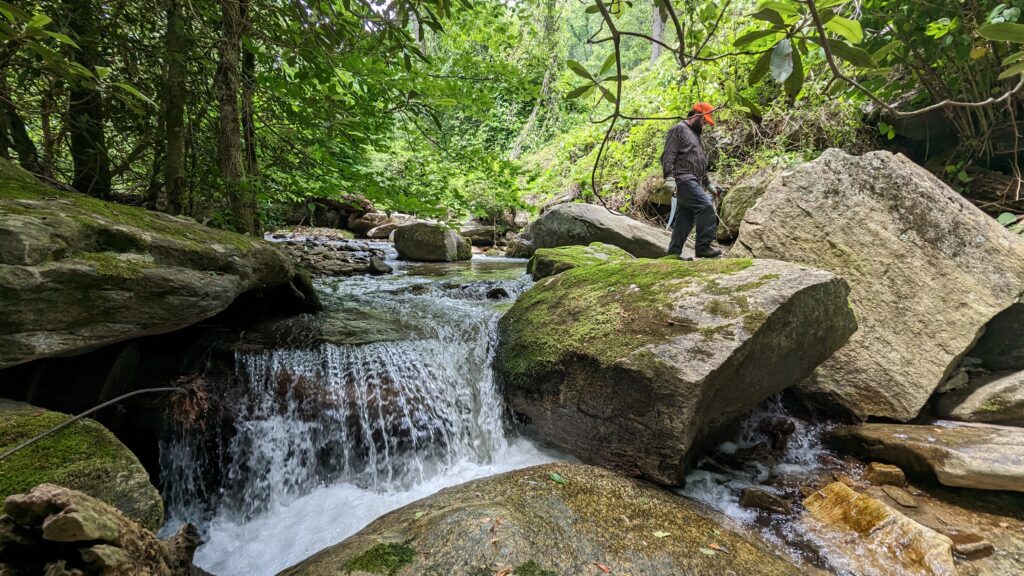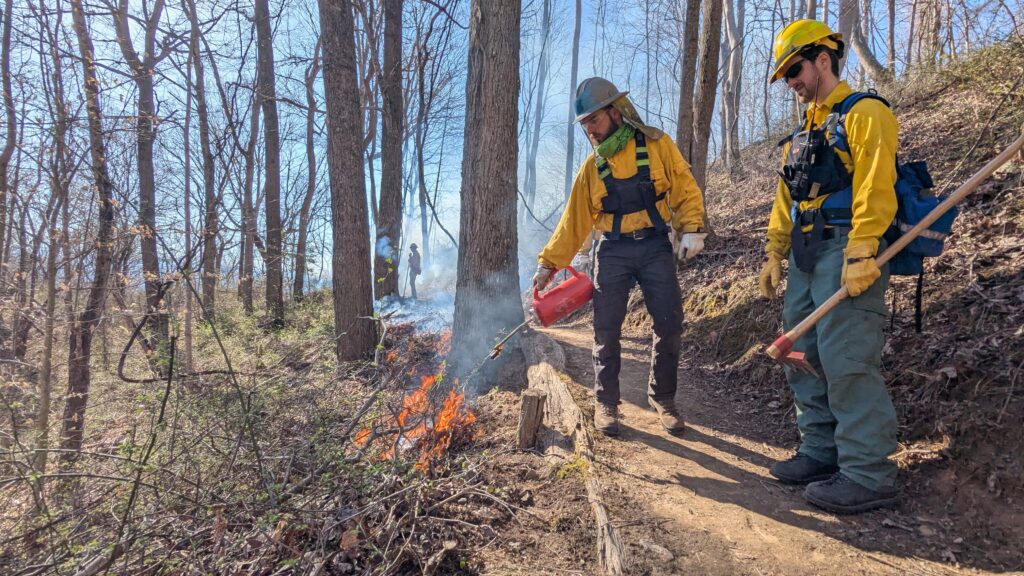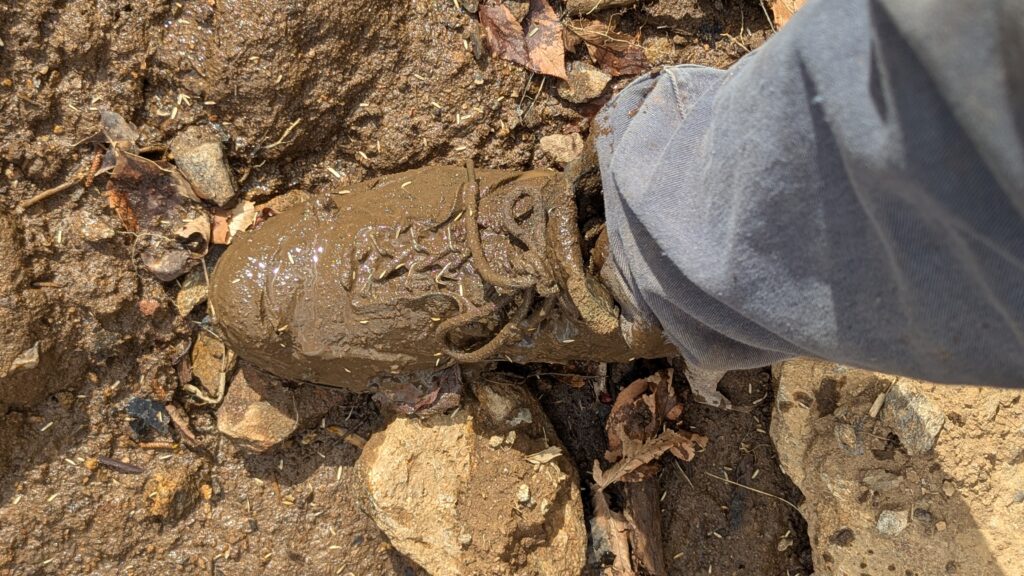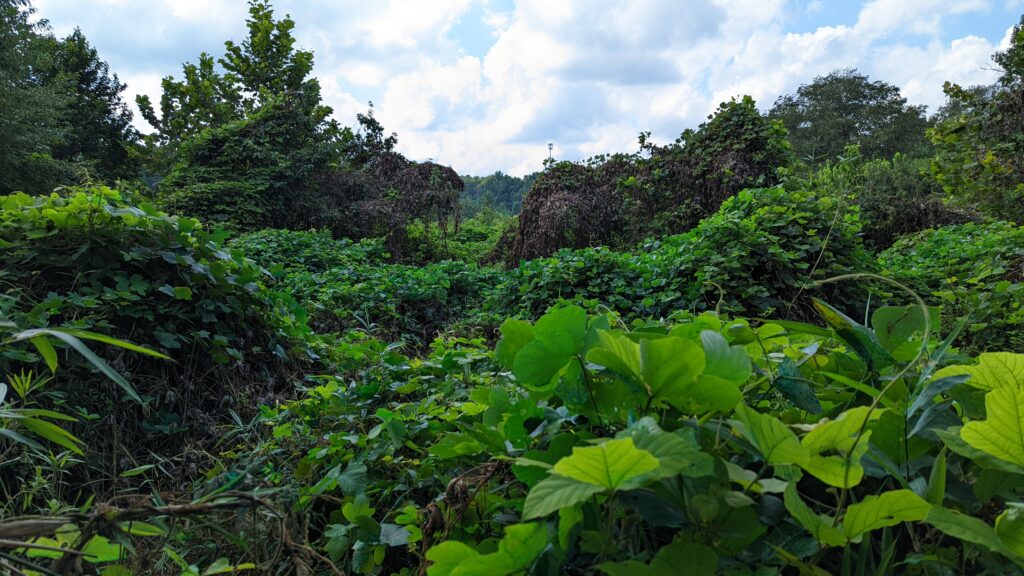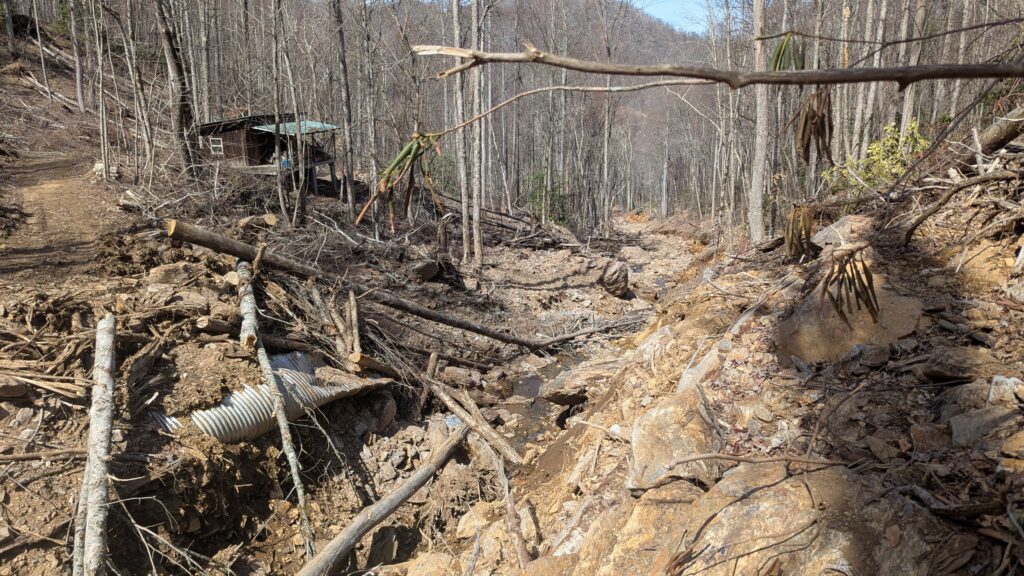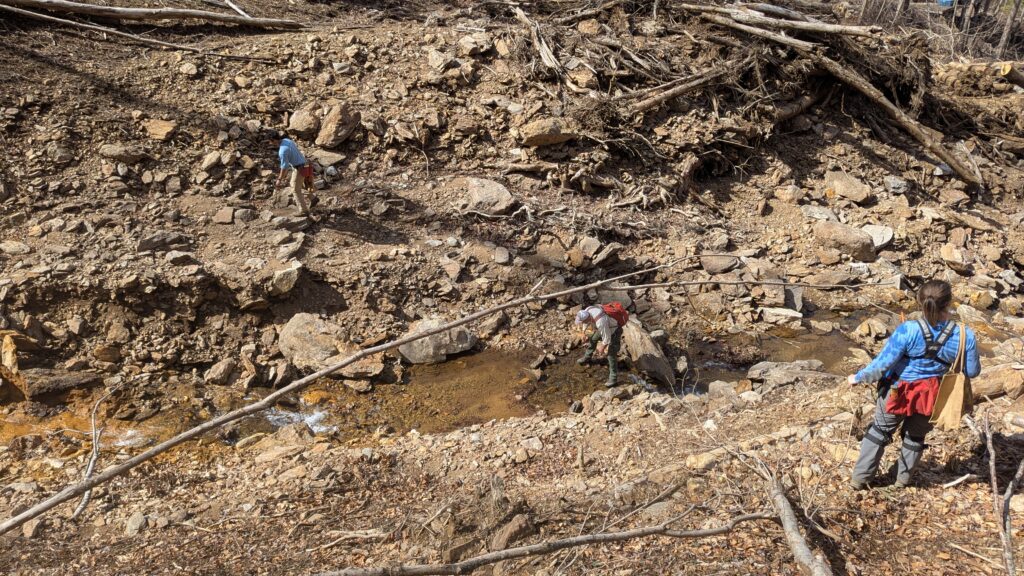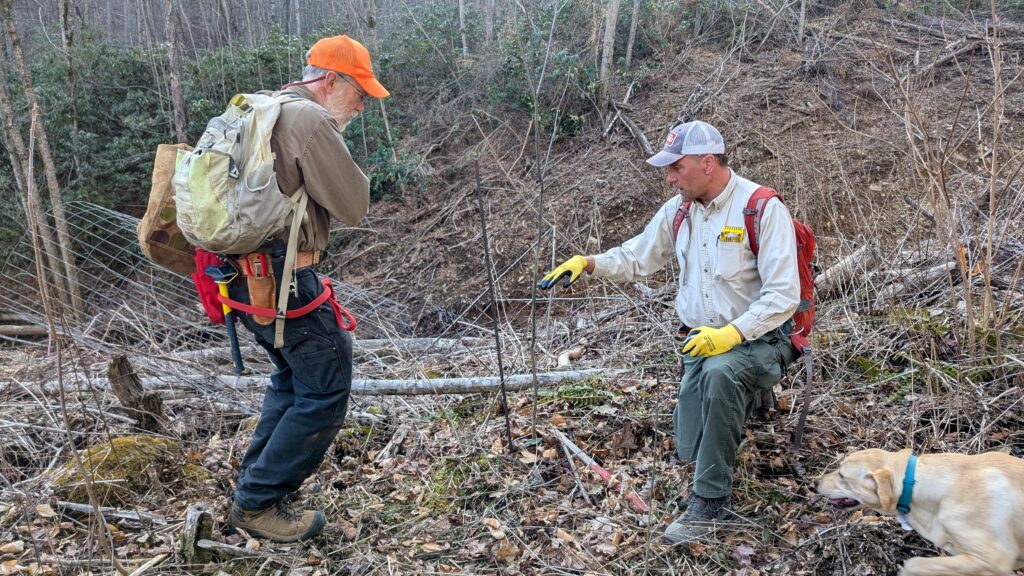Clearing Local Trails
The snow hissed as it touched the hot exhaust on my chainsaw. It was February 24, and I was crawling under a fallen pine on the way back to the EcoForesters truck, parked at the Big Butt trailhead on the Blue Ridge Parkway. Our crew had just worked with the U.S. Forest Service and volunteers of the North Carolina High Peaks Trail Association to clear as much of the trail as we could in a day. We encountered walls of large trees. It was a mess.
After Helene hit, the usual once in a while log blocking a trail had become many fallen trees, some stacked on top of each other, blocking numerous parts of trails. Big root balls towered into the air, with the corresponding hole sometimes exploding a trail like World War 1 artillery fire. Trees were twisted from tremendous wind force, the tops broken off and tossed down the mountain.
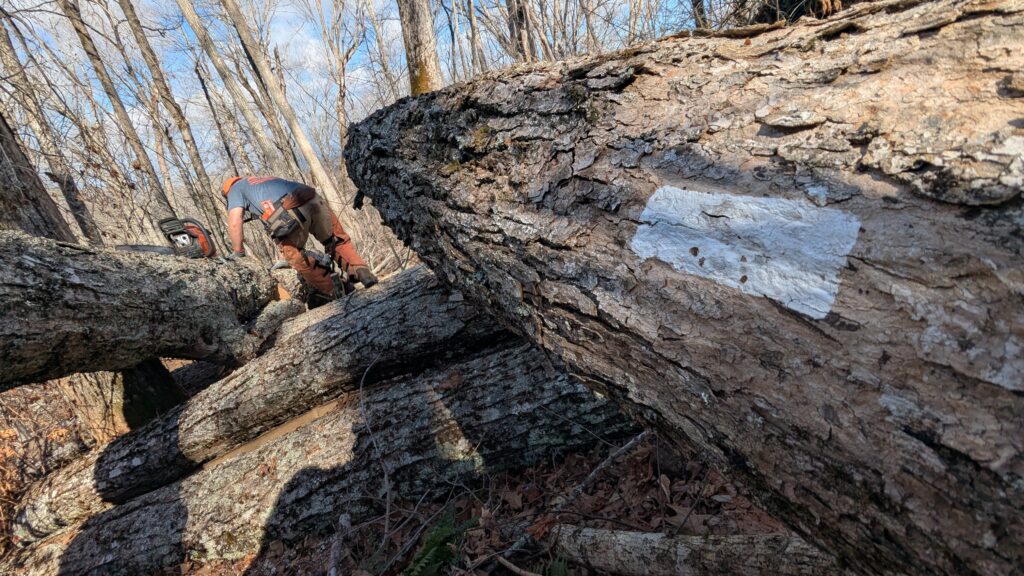
The damage seemed random, with many peaks left untouched, and bowls full of downed trees. It was as if the wind accelerated down the mountain, twirling and gaining speed in certain coves. You don’t have to hear it from me if you’re a local, but downed trees in the woods were no longer a spectacle, they were the norm.
EcoForesters was hired by Conserving Carolina to clear their trail systems in Gerton and the Hickory Nut Gorge area, including Strawberry Gap, Wildcat Rock, Florence Nature Preserve, and Bearwallow Mountain. Along with those, we also cleared a section of the Appalachian Trail near Stinking Creek along the Tennessee border, and many other private and public trails.
I personally was thrilled to work on these high profile and local trails. I loved hiking the Conserving Carolina trails before the storm, and it was an honor to work on restoring them post-storm. The work was cathartic, being able to repair and return to normality in some capacity.
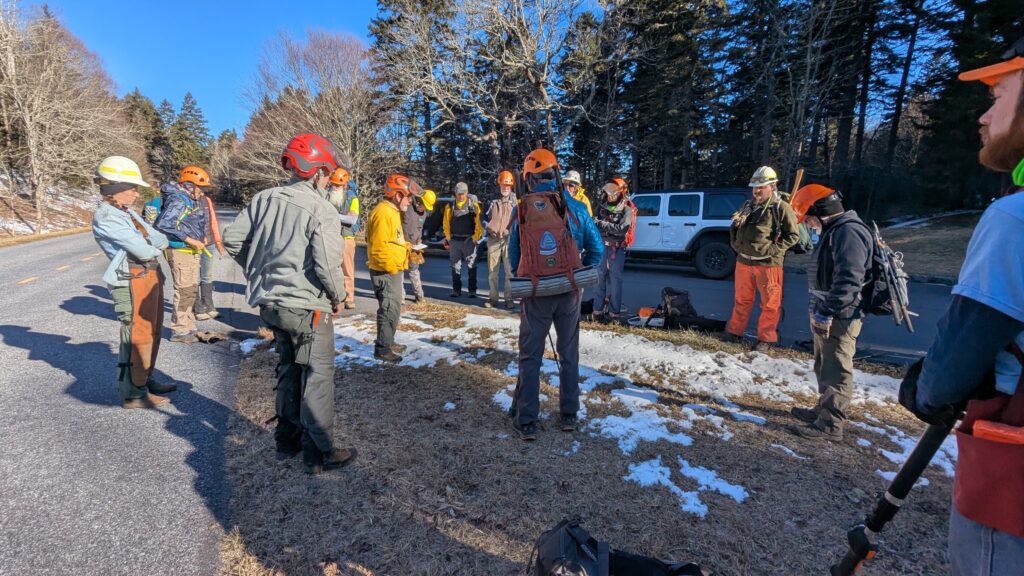
Clearing them meant chainsawing all the trees blocking the trail, moving the cut up wood out of the way, and assessing further trail damage that might need repairing. Crews leap-frogged each other as they made progress. In some cases, the trail was to be re-routed around major damage caused by uprooted trees. At Wildcat Rock, we started at the bottom and had to negotiate a creek crossing, since the trailhead was completely gone. Surprises and complicated puzzles of wrecked trees lay around every corner at all trail systems we encountered.
Despite all this, the work was hopeful. At a shelter on the AT, the logbook shared inscriptions of adventure and people finding themselves. This adventurous spirit surely lives on, the spring growing season sprouting and blending in the destruction. And the woods still looked great, with many areas untouched. Recreation will live on in our changed environment.
